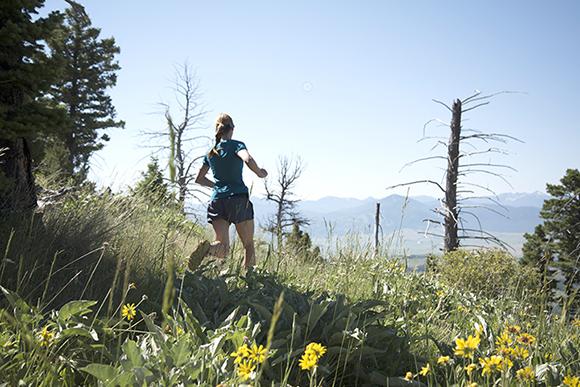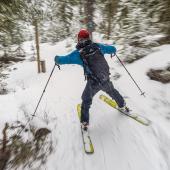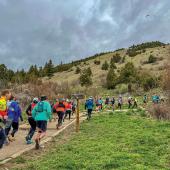Trail Running and Ankle Sprains
Summer is here, and many of us are getting out and enjoying runs on the many trails in our area. Trail running is a fast-growing sport that allows a runner to enjoy nature while being softer on the joints overall. A good training program and preparation for the demands of running on uneven terrain are important considerations. And don’t forget the fact that help is often far away.
Ankle sprains are one of the most common trail-running injuries. A sprained ankle results when the ligaments of the foot stretch too far or tear. Many lateral movements occur when on a trail, increasing the potential for ankle injury. Running over roots, rocks, trees, your dog, snow, mud, and hills requires heightened awareness and balance with a quick response to direction change.
What If?
The most common injury associated with ankle injury is an inversion sprain, which occurs when your foot rolls outward. Runners may experience this as a first-time injury or it may become chronic. Depending on the severity and your particular pain threshold, you might shake it off and continue on the run with more focus on the ground ahead, or it may be a long hobble back to the trailhead. The amount of swelling and bruising are good, though not failsafe, indicators of how badly the ankle has been sprained. Varying degrees of pain, swelling, point tenderness, and functional disability usually exist. The severity of the injury provides a basis to estimate the rate and intensity at which you can progress through the phases of treatment and rehabilitation. After an inversion trauma, an X-ray may be needed to evaluate any bony lesions that may have incurred and will affect decisions about appropriate management and care. If there is any doubt or your ankle swells very rapidly, seek a doctor’s advice.
Treatment
What to do for treatment? Many of us are familiar with the acronym R.I.C.E. Rest and ice your ankle the first 48 hours (15 minutes at a time). Contrast baths—alternating hot (100-105 degrees Fahrenheit) and cold (about 60 degrees)—work well. Apply compression gently with an ace wrap. And, finally, give the injured limb elevation to reduce swelling. Depending on the severity of the sprain (and the amount of pain you’re feeling), begin pointing and pulling the foot up and down, like pumping the gas pedal, as soon as possible. Another good exercise is to trace the alphabet with your toes.
As healing continues, progress with weight-bearing and balance & strength exercises while keeping pain to a minimum. Gradually you’ll return to increased resistance and challenges. If you can hop up and down on the injured ankle four times pain-free, and if it doesn’t hurt to go downstairs, you can look forward to getting back out on the trails soon.
Overall treatment goals are to restore full range of motion, strength, and balance. The damaged ligaments need to be allowed to heal so that they can restore their stabilizing function—restraining the ankle from excessive motion. Be wary of heading back out too soon and re-injuring the ankle. The balance system must be completely restored.
Prevention
Planning ahead in training should include general strengthening of the core, lower extremity, and balance muscles of the ankle as well as walking on toes and heels. Check the “Ankle Exercises” article to increase ankle response time when challenged. These exercises should become part of your routine. There are differing philosophies on bracing and taping. I suggest taping if you’re proficient at it, or wearing a low-profile air cast brace or lace-up. There are many brands on the market; check to see which fits your foot and shoe most comfortably. Strengthening your muscles is the best bet. Footwear with good lateral stability and traction will also help you avoid injury. Staying focused on the trail is paramount to avoiding obstacles and preparing your overall body response time. Most of all, avoid becoming too fatigued and enjoy yourself!












